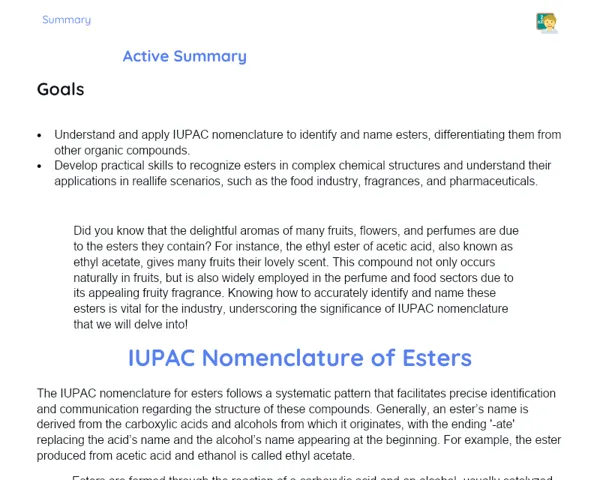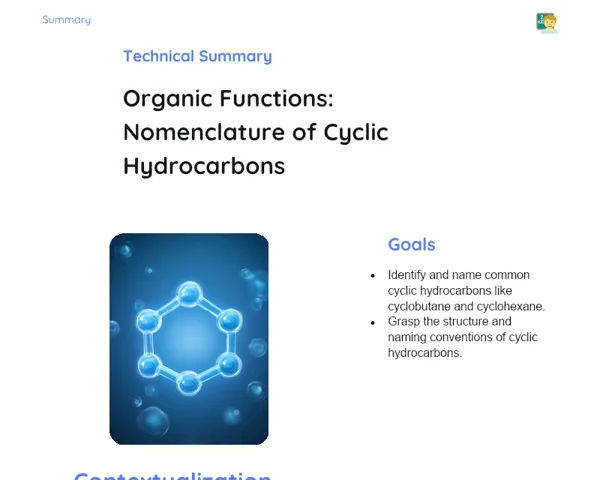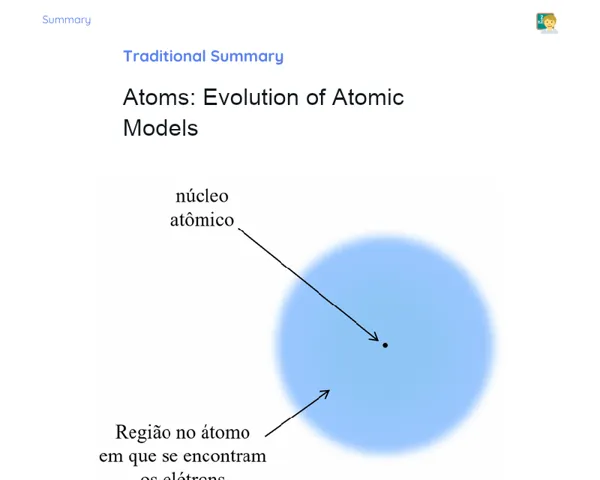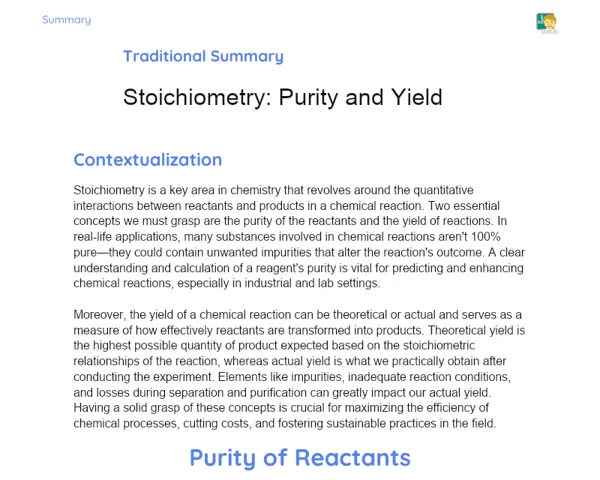Socioemotional Summary Conclusion
Goals
1. Learn how to calculate the solubility product of various chemical compounds.
2. Understand the concept of the common ion effect and its influence on the solubility of compounds.
3. Enhance socioemotional skills by recognising and managing emotions while solving chemical problems.
Contextualization
Have you ever wondered why, when water is already saturated, adding more salt simply doesn’t dissolve further? This is all about the 'Solubility Product'! Think of it like our body balancing essential minerals for proper functioning. In a similar way, this lesson will show you how chemical substances achieve equilibrium and what happens when extra ions are introduced. Keen to know more? Let’s explore it together!
Exercising Your Knowledge
Solubility Product (Ksp)
The Solubility Product, symbolised as Ksp, is an equilibrium constant that tells us how much of an ionic compound can dissolve in water before it starts to precipitate. This concept is important as it helps predict if a precipitate will form during a chemical reaction, which is essential in both school experiments and industrial processes.
-
Definition: Ksp is obtained by multiplying the molar concentrations of the ions in solution, each raised to the power of its stoichiometric coefficient.
-
General Equation: For a generic salt AB that dissociates into A+ and B-, the equation is given as [A+][B-].
-
Importance: It is useful in determining the saturation point of a solution, which has significance in industrial practices as well as in understanding natural phenomena.
Common Ion Effect
The common ion effect refers to the reduction in the solubility of a salt when a solution already contains one of the ions from that salt. This phenomenon is a practical application of Le Chatelier's principle and is important in demonstrating how extra ions can affect solubility and lead to precipitation.
-
Definition: When a common ion is added to a saturated solution, the equilibrium shifts, resulting in reduced solubility of the salt.
-
Example: For instance, adding NaCl (which dissociates into Na+ and Cl-) to a solution of AgCl decreases the solubility of AgCl.
-
Applications: This concept is crucial in processes like purification and in biological systems where ion concentrations need to be carefully regulated.
Relationship Between Chemical Equilibrium and Emotional Balance
Just as chemistry strives for equilibrium in solutions, we too aim for emotional balance in our lives. When tackling challenging problems like solubility calculations, a mix of emotions can arise. Being aware of and regulating these emotions not only helps maintain focus and calm but also contributes to both academic and personal well-being.
-
Self-awareness: Identifying your emotions while working through challenging problems can help you better understand your reactions.
-
Self-control: Cultivating the ability to stay calm during academic difficulties creates a more positive learning environment.
-
Responsible Decision-Making: Being aware of how your emotions affect your decisions makes you more resilient and effective in problem-solving.
Key Terms
-
Solubility Product (Ksp): The equilibrium constant that defines the solubility of ionic compounds in a solution.
-
Common Ion: An ion present in two dissolved substances that influences the solubility of a salt.
-
Chemical Equilibrium: The state where the concentrations of reactants and products remain constant over time.
For Reflection
-
How did you feel when tackling solubility problems and observing the common ion effect? What strategies did you use to manage any frustrations?
-
In what ways can understanding the solubility product influence your daily life and decision-making?
-
Recall a time when maintaining emotional balance was key to your success. How might that experience help you approach academic challenges now?
Important Conclusions
-
We have learned how to compute the Solubility Product (Ksp) and its role in determining the solubility of ionic compounds.
-
We have explored the common ion effect and seen how the presence of extra ions can influence the solubility of a salt.
-
We have also enhanced our socioemotional skills by recognising and managing our emotions during academic challenges.
Impacts on Society
Understanding the Solubility Product isn’t just an academic exercise—it has practical uses in everyday life, like in cooking or food preservation, where salt solubility plays a key role. Moreover, this knowledge is critical in the pharmaceutical industry for developing effective, soluble medications. The ability to calculate and interpret Ksp enriches our scientific understanding and aids our everyday decision-making, leading to healthier, more balanced lives.
On the emotional front, working through solubility problems teaches us the value of remaining calm and persistent. By recognising and managing our emotions, we prepare ourselves to handle future obstacles, both academically and personally. This balance is crucial for thoughtful, resilient decision-making and overall personal growth.
Dealing with Emotions
To incorporate the RULER method in your studies, try this exercise at home: After your study session, take a few moments to reflect on your emotions while solving these problems. Identify what you felt—be it frustration or triumph—and consider why these emotions surfaced and how they affected your performance. Write down these feelings in a diary or discuss them with a friend or family member. Lastly, brainstorm some strategies to manage these emotions, like deep breathing, meditation, or listening to soothing music. This practice will help create a more focused and healthy study environment.
Study Tips
-
Regularly practice solubility calculation problems to build confidence and fluency in the concepts.
-
Form or join study groups with your peers to discuss difficulties and share problem-solving strategies.
-
Make use of online resources, including educational videos and interactive simulators, to see these concepts in action.



